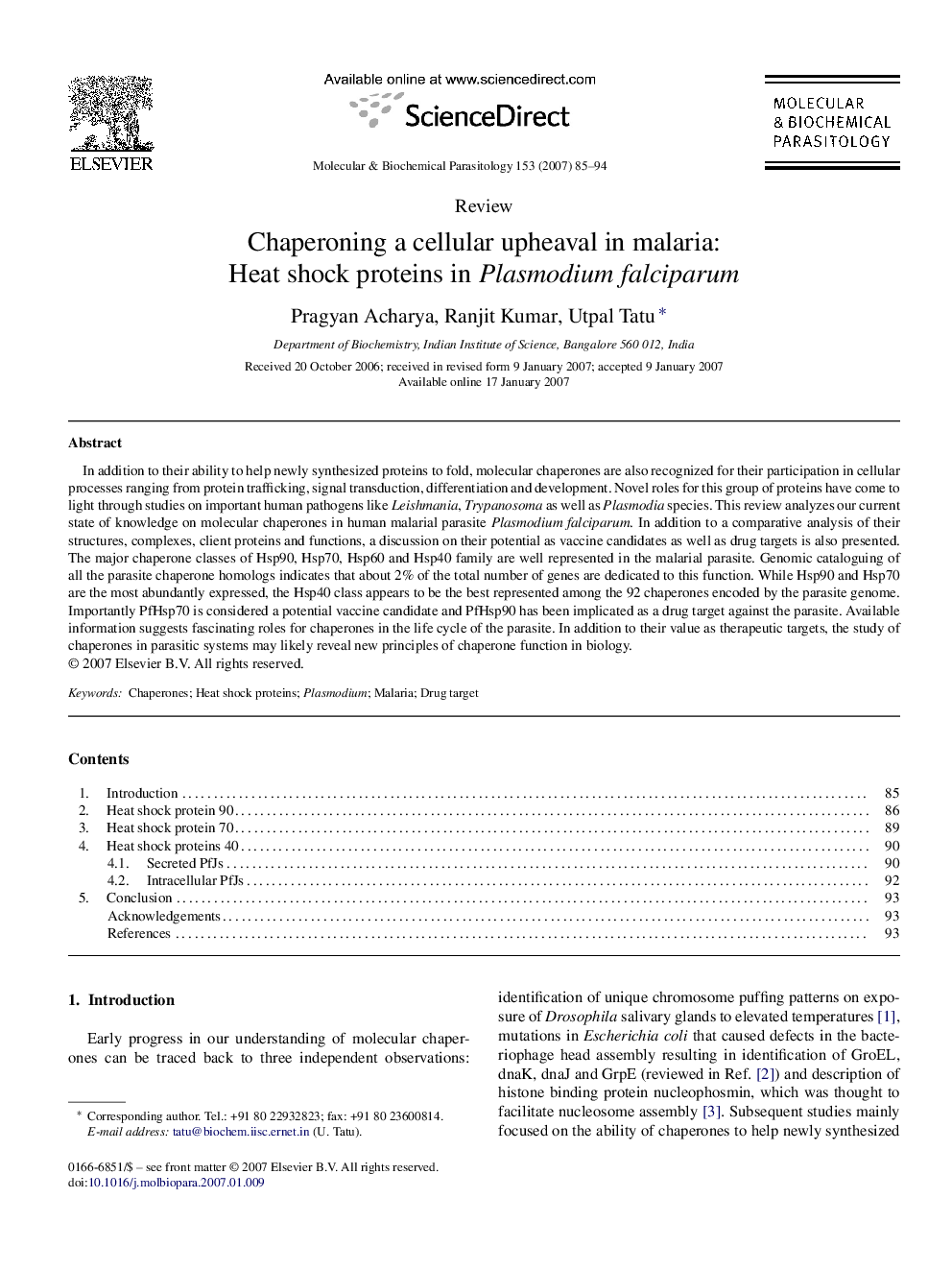| کد مقاله | کد نشریه | سال انتشار | مقاله انگلیسی | نسخه تمام متن |
|---|---|---|---|---|
| 2830222 | 1163368 | 2007 | 10 صفحه PDF | دانلود رایگان |

In addition to their ability to help newly synthesized proteins to fold, molecular chaperones are also recognized for their participation in cellular processes ranging from protein trafficking, signal transduction, differentiation and development. Novel roles for this group of proteins have come to light through studies on important human pathogens like Leishmania, Trypanosoma as well as Plasmodia species. This review analyzes our current state of knowledge on molecular chaperones in human malarial parasite Plasmodium falciparum. In addition to a comparative analysis of their structures, complexes, client proteins and functions, a discussion on their potential as vaccine candidates as well as drug targets is also presented. The major chaperone classes of Hsp90, Hsp70, Hsp60 and Hsp40 family are well represented in the malarial parasite. Genomic cataloguing of all the parasite chaperone homologs indicates that about 2% of the total number of genes are dedicated to this function. While Hsp90 and Hsp70 are the most abundantly expressed, the Hsp40 class appears to be the best represented among the 92 chaperones encoded by the parasite genome. Importantly PfHsp70 is considered a potential vaccine candidate and PfHsp90 has been implicated as a drug target against the parasite. Available information suggests fascinating roles for chaperones in the life cycle of the parasite. In addition to their value as therapeutic targets, the study of chaperones in parasitic systems may likely reveal new principles of chaperone function in biology.
Journal: Molecular and Biochemical Parasitology - Volume 153, Issue 2, June 2007, Pages 85–94